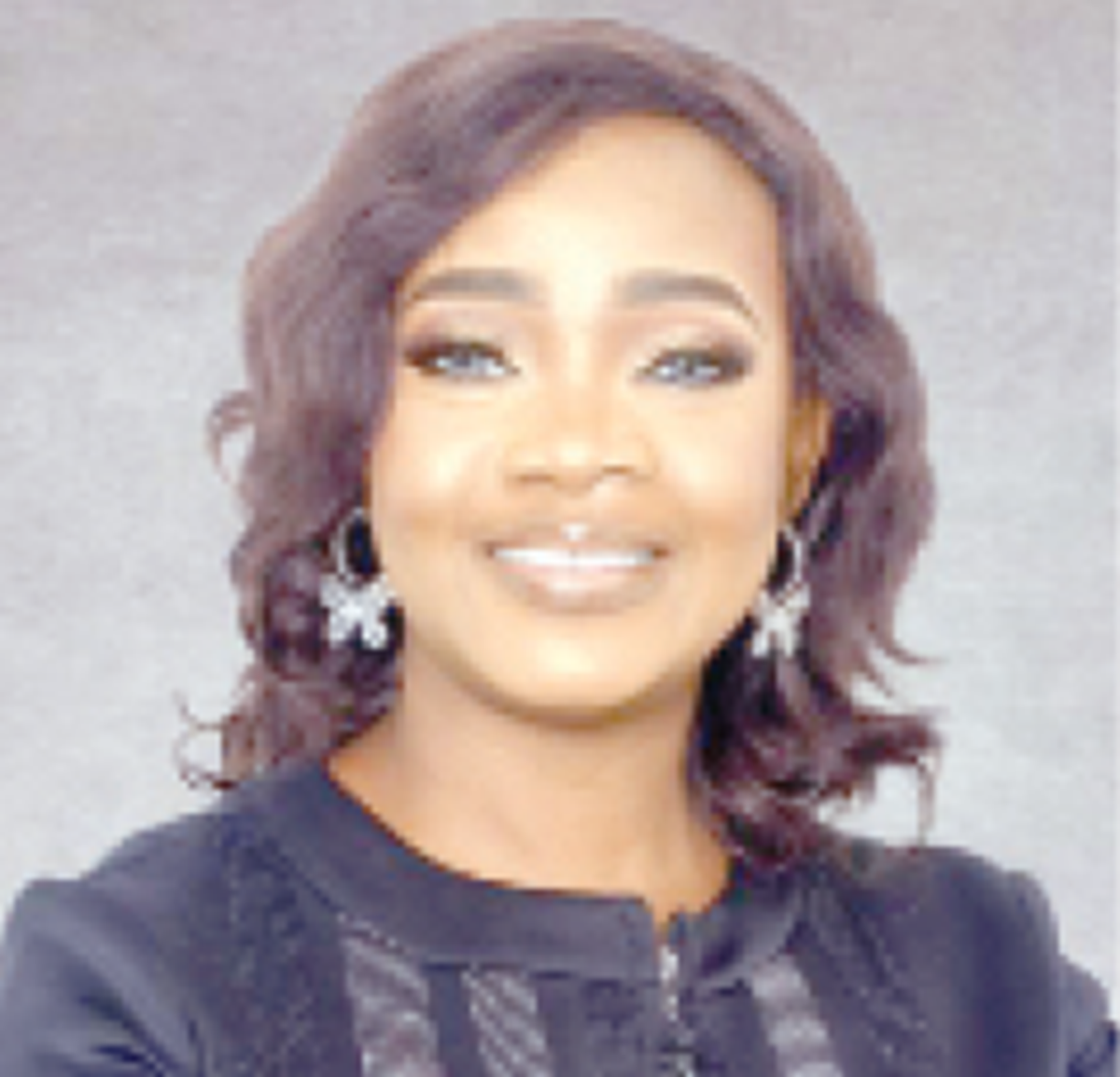Dr AyoOluwa Idowu, a consultant radiologist with a bias for breast cancer imaging at the Department of Radiology of the University College Hospital (UCH), Ibadan, in this interview with Sade Oguntola, speaks on how women can best avoid being a prey of breast cancer.
Why is early detection of breast cancer important, and how can this be achieved?
Breast cancer is a menace; we all know that a lot of women die from breast cancer. About one in eight woman will experience breast cancer in her lifetime, so every woman needs to get herself examined for breast cancer. We have what is called triple assessment. The first sep is for a woman to come for a clinical breast examination, where a doctor is going to feel the breasts with their hand i.e palpate. The second step is imaging of the breasts. The woman’s age will determine what type of imaging she should undergo. A woman who is 40 and above will undergo a mammogram, but a woman who is less than 40 will undergo a breast ultrasound.
However, a woman tagged ’high-risk’ can still undergo a mammogram if she’s less than 40, particularly if she has a family relation that had breast cancer. Women with a positive family history of breast cancer should start early breast screening at about 35 years. For example, if a woman had breast cancer at age 40, it is expected that her daughter should start to get screened for the cancer by age 30. That is the guideline.
Nonetheless, for the average population, a woman must start doing her mammogram at age 40, and it has to be yearly. That is Nigeria’s policy, although in the UK, it is every three years that they do that.
The third step is biopsy. If a doctor detects anything during a clinical breast examination, which entails feeling the breast with the hand i.e palpation, the woman will be sent for imaging to confirm that there is a mass indeed and then a biopsy will be carried out depending on the appearance of that mass on imaging. If the mass looks ‘suspicious’ the mass should be biopsied. And this will be sent to the pathologist, who will then see whether it is benign or malignant. So, if it’s malignant it is just saying that it is breast cancer. If it is benign, it just means that the woman does not need to worry about it; it is not likely to become breast cancer.
However, we have some lesions in the breast that we call precancerous conditions of the breast. They are not cancer per se. But once they are found in the breast, then the woman should be wary. It is a risk factor for a woman developing breast cancer. For example, we have atypical ductal hyperplasia, which is not cancer. But if it were found, that woman has a higher risk of having breast cancer.
When do you need breast self-examination? When do you need a clinician to have a look at your breast?
Once a woman is 20 years of age, she should do breast examination once every month. During menstruation, a lot of women go through what we call the premenstrual symptoms. The breast can feel lumpy at that time. So, between day three and five after the menses, those are the best days to do breast self-examination once every month. A woman who is pregnant, too, can do it, likewise a woman who is breastfeeding. All that she needs to do is empty her breast of milk and then examine it. Similarly, a woman who has stopped menses can pick her birth date to examine her breasts monthly. She can set an alarm as a reminder since there is no menses. This breast examination can be done while standing or lying down. The flat part of the three fingers is moved in a circular motion from mild to deep pressing all around each breast, reaching the nipple, the collarbone, and then under the armpit. Putting the hand next to the breast to be examined under the head, and then using the other hand to check that breast. Breast examination is easier, preferably when in the shower and there’s soap on the woman’s skin. Of course, different techniques can be used or adopted.
What are you looking for?
We are looking for lumps a lot of the time. The lump usually feels like a hard seed or nut. And then, depending on the size, sometimes it can feel like a lime or a walnut. The soft ones are not likely to be malignant, so not all lumps are cancerous. Even when it’s not hard, there must still be a biopsy for every lump that looks ‘suspicious’.
Then, before starting to palpate, first look at the breast in the mirror. Are they the same size? Usually, one breast is slightly larger than the other. However, there should not be an obvious difference. Also, there should not be warmth, redness, thickening, a cod-like appearance, or “Peau d’orange” rash, like the bark of an orange on the skin of the breast. There should not be pain or darkening of the skin of the breast or a discharge like fluid coming from the nipple. So those are the things that we are looking out for. Once all those are ruled out, that’s when you start to palpate and then check to feel how the breast looks.
Clinical breast examination follows this procedure, too, which is the same thing that a doctor is going to do at the hospital. So, it is advised that if a woman is less than 40, she should have a health professional knowledgeable about it, examine their breast once every two to three years. Once a woman is over 40, the clinical breast examination should be done once yearly and be told by the doctor that everything is okay. And at the same time, she should also have a mammogram. Magnetic Resonance Imaging (MRI) is not the general screening tool per se; it’s reserved for women who have high risk of breast cancer that is women with a positive family history of breast cancer. The breast MRI can also done in women with breast to determine the extent of the disease.
Can you talk a little bit more about the mammogram? What does it entail? What are they looking for? Is it a painful procedure? Is it something that women can just walk into the hospital and have easily done?
Yes, a mammogram is an X-ray procedure, though these are low-dose X-rays that the breasts are exposed to and for women who are over 40, can do. In Nigeria, you walk into the hospital to have a mammogram done, except maybe you need to book. It’s slightly painful because the breasts are going to be compressed by the breat paddles. Then the x-ray machine is going to go around it, depending on the type of x-ray machine. If it is a digital breast tomosynthesis, the breast will be viewed in three-dimensional(3-D) approach where pictures of the breasts are captured in multiple views from a variety of angles in a second which are then reconstruted into a 3-D volume This is a very useful state-of-the-art tool that can be used for breast cancer screening, especially for women with a positive family history of breast cancer.
The mammogram detects cancers even before the doctor can feel them. That is why a woman needs to have a mammogram done regularly. Breast cancer could have a telltale sign on imaging two to three years before it becomes a lump. There could be what is called suspicious micro-calcifications. We are looking for four things on a mammogram. These are architectural distortion, asymmetry or asymmetric density, suspicious calcifications and mass. We don’t want to see if there is a mass; we want to pick it at an early stage, what we call the stage zero. We want to see if the mass is still contained and treatable or if the whole place is all riddled with lots of lumps, and then if it has gone into the armpits or to the other breasts.
So, a woman above 40 years can go for a mammogram yearly. A woman can start having a yearly mammogram depending on her age and the age of her family member that had/has a history of breast cancer. It is also important that the woman be monitored; she needs to also have breast MRI, counseling and genetic screening for cancer-causing genes like BRCA1 and BRCA2. Early detection is important, as it is most curable. The breast is composed of breast tissue, and then we have fat that supports it, ducts and blood vessels. So, any structure within the breast can develop breast cancer.
If mammograms can pick up suspected cases of breast cancer much earlier than breast self-examination and clinical breast examination, can they not be used to screen for breast cancer?
Screening means that you want to be sure that there is no cancer. Self-breast self-examination is not a screening tool for breast cancer. It is just what women can easily do at home. Even if a lump is detected, you will still need an imaging tool for diagnosis , which is also the mammogram. Also, Ultrasound scanning is not used a screening tool because it will not pick up any microcalcification, just like self-breast examination. That is why there is a need for a mammogram to have a look and see if there are microcalcifications. But not all microcalcifications are cancerous.
But experts advocate mammograms as a screening tool rather than an MRI. You can’t advocate for every woman to go and have a breast MRI done. It is very expensive and reserved for high-risk women. Mammograms are affordable. However, screening with a mammogram is not covered by health insurance, except when there is already a disease in the breast. Even then, women will still need to pay half its price. However, afterward, a biopsy is important to determine whether the lump is benign or malignant.
Read Also: CBEX: EFCC declares foreigner, Elie Bitar, wanted
If there is a role for clinical breast examination in the overall early detection of breast cancer, why is there a problem regarding this?
There is a problem because many women are not checking their breasts. The turnout even for breast screening in many communities is poor; the mentality of many women is that there is nothing wrong with them. I’m not feeling anything, so why should I come to the hospital to spend hours with a health professional to check my breast or have a mammogram? But early breast cancer detection starts with all women knowing their breasts. They need to know how it feels and look so that if anything goes wrong, they will know. If you don’t do that monthly, you will not know what those breasts feel like. Maybe you mistakenly felt them while you were menstruating. You then ask why are my breasts this lumpy?.
But if you had known that when you are menstruating, they can be lumpier, then after three to five days, they are settled, and then this is how they should be. So, women have to know their breasts first before they can detect anything different early. And then you have to do the mammogram yearly. The first one will be the baseline screening mammography. If you are doing it yearly, we will now be checking it against it to see if anything is changing in your breasts. The breasts, too, are not staying the same; they also change. As a woman ages, the breast tissue becomes less dense. The breast tissue is also being replaced by fat.






